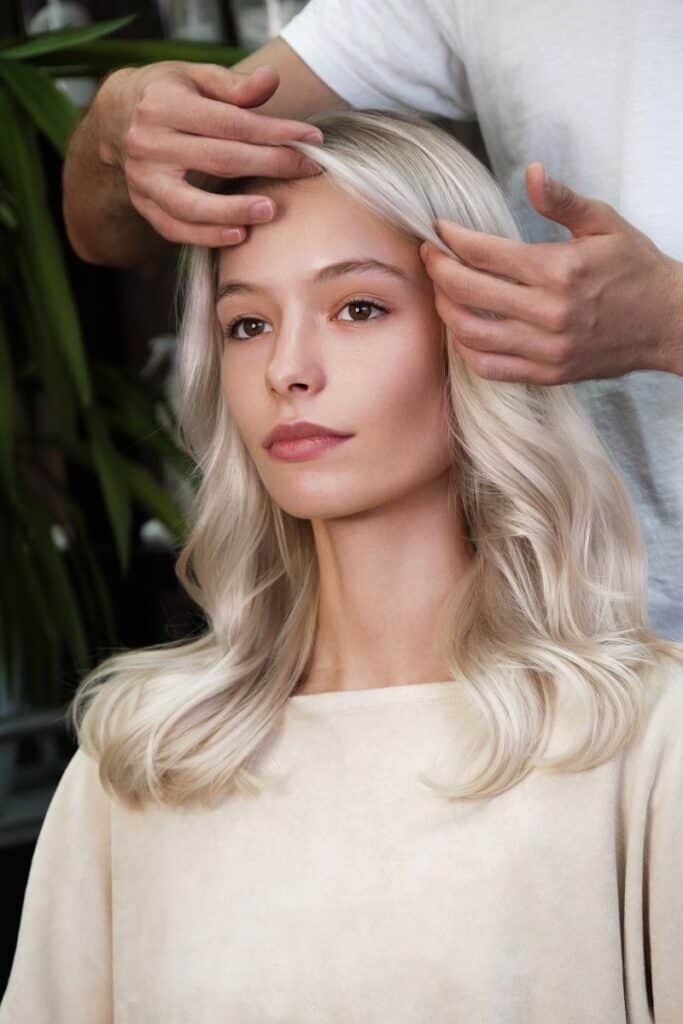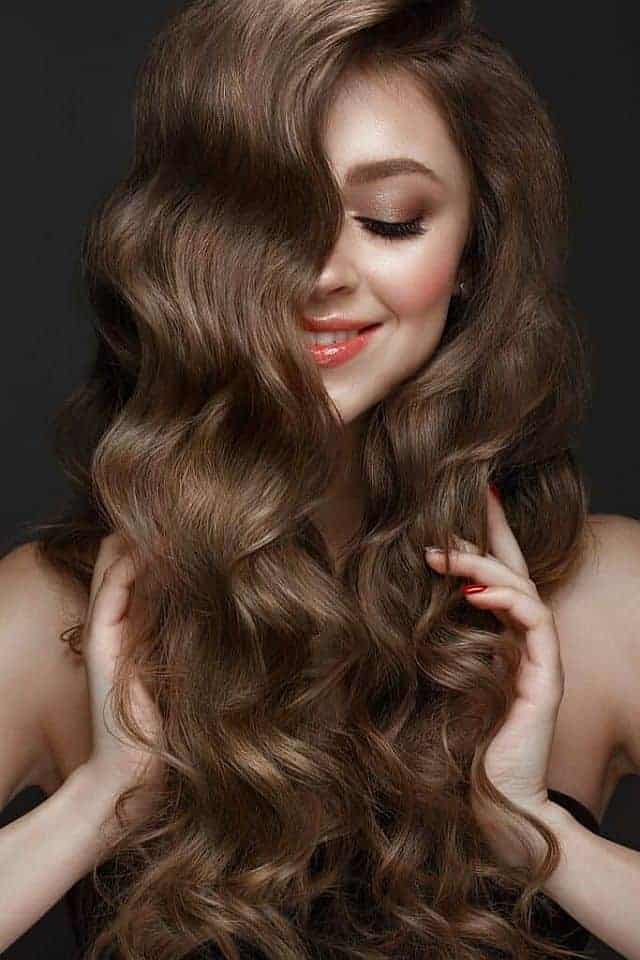The coloring process involves the use of harsh chemicals, which can cause hair damage. Alkaline substances in the color mixture cause hair cuticles to lift to allow the color to penetrate inside the hair. Frequent coloring can roughen the cuticle layer, leaving your hair dry and porous. When color molecules are no longer protected within a sealed cuticle layer, your color may fade quickly.
To ensure prolonged vibrancy, as well as to avoid damage from frequent coloring, your colorist may suggest some post-color treatments to seal lifted cuticles and prevent your new color from fading.
Post-Color Hair Treatments

Color-lock treatments are intended for use immediately after coloring to complete the color service. Your stylist will apply the treatment to wet hair after rinsing out the dye.
Color-lock treatments help close the cuticle to lock in color, untangle knots, and make hair soft and glossy. More versatile color seal treatments also prevent further oxidation by neutralizing residual dye agents in the hair. These treatments restore the natural pH levels of the hair and skin and help retain color longer.
In addition to hydrolyzed proteins, silicones, and moisturizers, color lock products usually contain an acidic ingredient that contracts and closes hair cuticles. After-color treatments are especially beneficial for high-porosity hair and when using colors that tend to fade fast, like reds.
If you dye your hair at home, Ion Color Defense After-Color Sealer is one of those post-color treatments that help to stop color bleeding and prolong its longevity.
If you dye your hair in a salon, your colorist may suggest hair gloss or hair glaze treatment to lock in your new color.
1. Hair Glazes

Many salons offer their clients hair glaze treatments to seal the cuticle after coloring and reveal a deeper, more intense color. Hair glaze treatments coat the shaft to enhance the effects of permanent dye, maximize shine, and help extend the life of your color.
Most hair glazing products can easily be applied at home. Simply apply the product to wet hair, allow it to penetrate for as long as directed, and rinse. The effects last up to two weeks and will give your hair a sleek look and a high-shine finish. Hask Rose Oil & Peach glaze is an affordable and easy-to-apply hair glaze that will enhance your color and add a beautiful shine.
2. Hair Glosses
Hair glossing is a salon treatment that locks in color and adds intense shine to your hair. This treatment coats your strands without penetrating the hair shaft. Glossing products contain acidic ingredients that help smooth and tighten cuticles lifted by the chemicals in permanent dyes. Hair gloss creates a shiny film around the hair shaft to enhance the color vibrancy and add shine and softness to the hair. There are also tinted hair glosses. They deposit pigments to improve the tone of hair color and add translucent shine.

Hair glossing can be added to your hair care regimen because is easy to do at home. Make sure to follow instructions as application methods may from product to product. One of the hair glosses that is meant for use at home is dpHUE Gloss. It is available in 11 intermixable shades and the application is not messy.
The results of the glossing treatment gradually wash out every time you shampoo your hair, so the treatment needs to be re-done every 4-6 weeks if you want to maintain the effects.
How Can You Prolong the Life of Your Hair Color?
The way how you wash and style your hair can prolong the life of your color. You should refrain from frequent washing and avoid using hot water for washing your hair. Use color-safe shampoos and apply conditioner after each wash. Use hot styling tools in moderation as high heat can damage cuticles and speed-up color fading.
There are also a bunch of after-color products formulated to help lock in your color and keep your hair shiny and vibrant until your next salon visit. Some of these color sealers for hair should be used immediately after coloring to stop the oxidative process and restore the hair’s normal pH balance. Some others are designed for home use to maintain healthy cuticles and protect hair from other environmental stressors that can affect color’s vibrancy.
1. Apply a Hair Mask for Colored Hair
Most hair masks offer a solution to a specific problem related to your hair. Masks formulated for colored hair repair damaged and weakened cuticles which help to hold the color molecules inside the hair and prolong color vibrancy. These hair masks also increase the strength and elasticity of your strands and soften hair that has been damaged by coloring. Fanola After Colour Mask is advertised to help lower pH after coloring and adds a nice shine to your hair.

2. Use a Leave-In Conditioner for Colored Hair
Leave-in treatments designed for color-treated hair help seal the cuticle to keep color molecules inside the hair and prevent color from fading. Leave-in products for colored hair use amino acids, nourishing oils, antioxidants, and sunscreens to protect stressed hair from keratin damage and keep the cuticles healthy and flexible. Leave-in conditioners keep colored hair moisturized, help tame frizz and flyaways, and improve softness and manageability. They also protect hair from damaging UV rays and other environmental factors that can cause fading. Amika vault color-lock leave-in conditioner is advertised as capable of protecting the hair against UV-B damage, keeping colors vibrant, and enhancing hair’s overall health.


























